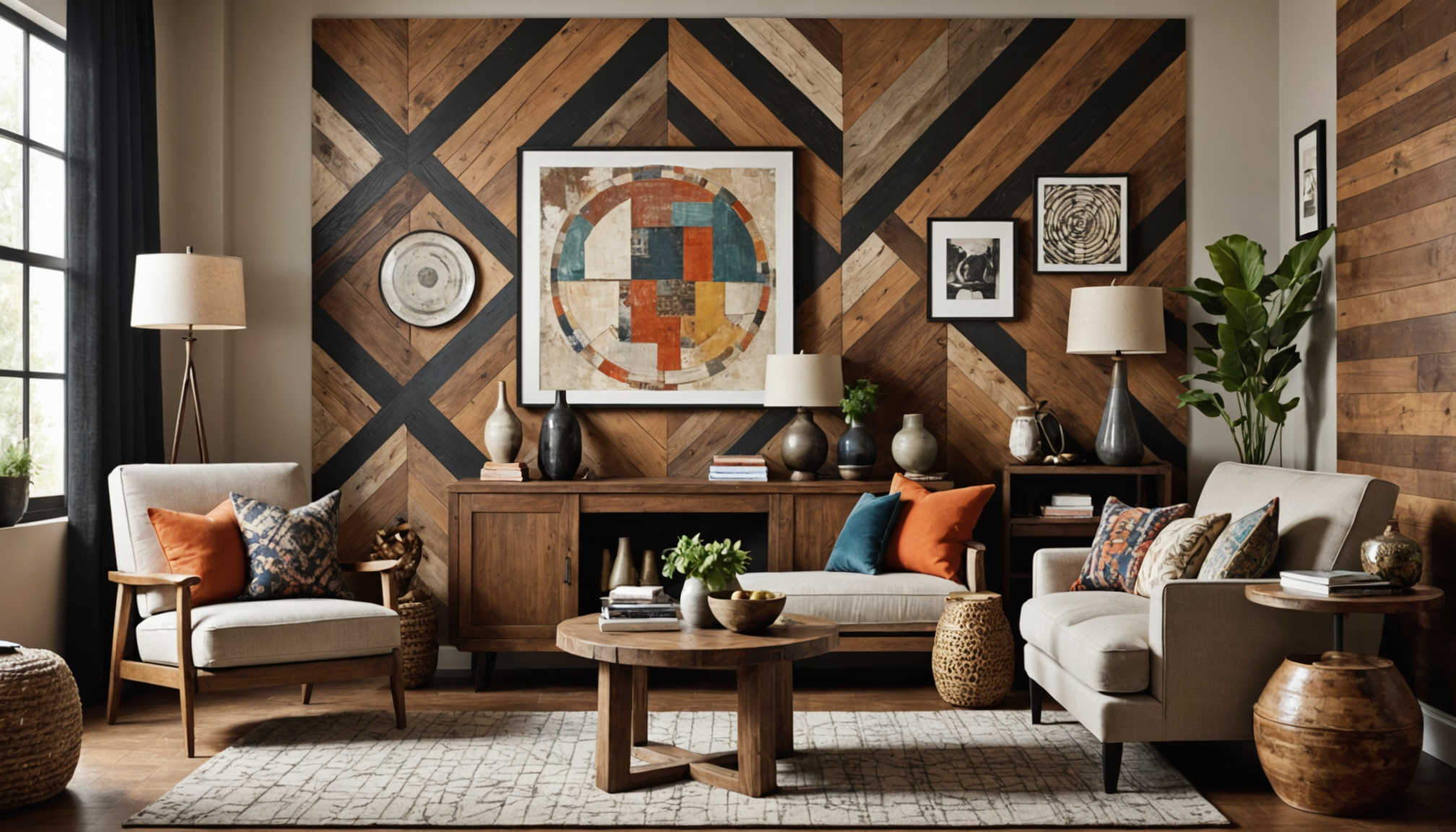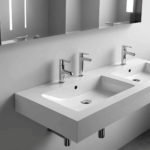When embarking on a journey to transform your living space, understanding your style preferences is an essential first step. Your interior designer will rely heavily on this insight to create a space that truly feels like home. Personal style goes beyond mere aesthetics; it reflects your personality, lifestyle, and functional needs. Therefore, it is crucial to explore this aspect thoroughly before proceeding with any design decisions.
To begin, reflect on the spaces that make you feel comfortable and inspired. Do you find warmth in rustic interiors, or are you drawn to the sleek lines of a contemporary design? Perhaps the vibrant eclectic mix of colors excites you, or maybe you prefer the serenity of a minimalist approach. Identifying these preferences can help narrow down the myriad of options available and provide a clear direction for your interior designer.
A useful approach is to gather visual inspiration. Consider the following tips to effectively communicate your style inclinations:
- Create a Mood Board: Use platforms like Pinterest or physical cuttings from magazines to compile images, colors, textures, and furnishings that resonate with you. This visual representation serves as a foundation for your design discussions.
- Reflect on Your Wardrobe: The colors, patterns, and styles of clothing you gravitate toward can provide insight into your interior design preferences. For instance, if your wardrobe is filled with neutral tones, you might lean towards an understated, calm design palette.
- Consider Your Daily Life: Your home should not only reflect your style but also accommodate your lifestyle. Consider the functionality you need from each space. A house teeming with children will have different requirements compared to a single-person household.
- Identify Emotional Responses: Pay attention to how different environments make you feel. Spaces that evoke positive feelings can often guide you toward your ideal style.
Once you have a clearer picture of your style preferences, articulate them effectively to your designer. Provide them with your curated mood board, discuss your lifestyle requirements, and express the emotional responses you wish your space to evoke.
For individuals struggling to articulate their style, interior designers often have processes in place to assist in this discovery. They may offer a series of questions, present style quizzes, or conduct interviews to extract key style elements. Comparing different styles can also be beneficial, as shown in the following table:
| Style | Characteristics | Typical Elements |
| Contemporary | Sleek, clean lines, neutral colors | Metallic accents, minimalist furniture, geometric shapes |
| Traditional | Elegant, classic details | Rich wood tones, ornate moldings, symmetrical layouts |
| Rustic | Warm, natural, and cozy | Exposed beams, stone elements, earth tones |
| Eclectic | Diverse, personalized, vibrant | Mix of patterns, various textures, unique art pieces |
By effectively understanding and communicating your style preferences, you lay the groundwork for a design process that is both fulfilling and reflective of your personal identity. This clarity not only aids the designer in crafting a coherent and personalized space but also ensures that the outcome will be a harmonious blend of aesthetics and functionality that suits your unique lifestyle.
Setting your budget and timeline
Establishing a clear budget and timeline is critical to ensuring a smooth and successful interior design project. This involves not only your financial capabilities but also your expectations regarding the timeframe for project completion. Here’s how to navigate this crucial phase:
- Determine Your Overall Budget: Begin by deciding how much you are willing to spend on the project. Consider breaking down this overall amount into categories such as furniture, decor, and professional fees. Remember to include a contingency for unexpected expenses, typically around 10-15% of your total budget.
- Prioritize Your Spending: Identify which elements of your design are most important to you. Are you willing to splurge on custom furniture or high-end materials? Conversely, are there areas where you’re comfortable cutting costs? Establish these priorities with your designer to allocate funds effectively.
- Communicate Openly with Your Designer: Discuss your financial constraints and expectations with your designer. An open dialogue ensures that they propose solutions that align with both your vision and budget. Remember, flexibility can be beneficial; your designer might propose cost-effective alternatives that might not have been initially considered.
- Outline the Project Phases: Have your designer provide a detailed timeline, outlining each phase of the project. This includes the design, ordering of materials, construction, and installation phases. Ensure clarity on when each stage is expected to commence and conclude.
- Set Realistic Timeframes: Understand that custom orders and certain materials might extend your original timeline. Weather conditions or construction delays can also impact completion dates. Discuss these possibilities upfront to manage expectations and plan accordingly.
- Track Progress Regularly: Establish regular check-ins with your designer to assess whether the project is on track with both the budget and timeline. This allows for timely adjustments and ensures transparency throughout the process. Keeping abreast of every stage helps in mitigating unforeseen circumstances effectively.
By thoughtfully setting your budget and timeline, you create a roadmap that guides the project’s development. This structure not only helps in avoiding financial overspending but also minimizes the chances of delays, ensuring a journey that is as enjoyable as the end result will be rewarding.
Exploring materials and finishes
Exploring materials and finishes is a crucial phase in the interior design process that significantly impacts the final look and feel of a space. This step involves a deep dive into the options available for surfaces, fabrics, and details that will adorn your interiors, enabling you to create a cohesive and aesthetically pleasing environment. Here’s how to navigate this key aspect of your design journey.
First, consider the aesthetic appeal of different materials and finishes. It’s important to choose elements that resonate with your style preferences and enhance the overall theme of your home. For instance, if your style is contemporary, you might opt for materials such as stainless steel or glass that offer clean lines and a sleek appearance. Conversely, if you lean towards a rustic ambiance, materials such as reclaimed wood or natural stone can add warmth and texture to your interiors.
Next, it’s essential to assess the durability and maintenance of the materials you are considering. High-traffic areas such as kitchens and living rooms require materials that can withstand daily wear and tear. For instance, quartz countertops are not only stylish but also highly durable and easy to maintain, making them a popular choice for busy kitchens. Discussing the durability of different options with your designer can help you select finishes that will last and maintain their beauty over time.
Additionally, explore the sustainability and environmental impact of your material choices. In today’s eco-conscious world, many homeowners are opting for sustainable materials that reduce environmental impact. Materials like bamboo or cork are not only renewable but also add unique textures to a space. Consult your designer about eco-friendly options that align with your values, helping you create a home that is both beautiful and environmentally responsible.
Another consideration is the cost-effectiveness of materials. Some high-end finishes, while stunning, might strain your budget. Engaging with your designer on alternative options that deliver similar aesthetic appeal at a lower price point can be beneficial. For instance, engineered wood can provide the look of hardwood floors without the hefty price tag. By reviewing and comparing material costs, you can implement your design vision without compromising financial constraints.
Finally, engage in selecting the right finishes for your fixtures and accessories. The finishes on items like cabinetry handles, light fixtures, and faucets can make or break a design scheme. Mixing metals like brass and chrome can add a touch of elegance and uniqueness to a room. Your designer can help you experiment with different finishes to find combinations that complement your style seamlessly.
By meticulously exploring materials and finishes, you ensure that every aspect of your design works in harmony to create a unified and polished result. This attention to detail not only enhances the beauty of your home but also ensures that it meets your functional needs and stands the test of time. Your home is a reflection of you, and through careful selection of materials and finishes, you can make a space that truly brings your vision to life.
Discussing functionality and layout
When collaborating with an interior designer, it’s imperative to delve into the functionality and layout of your space. These elements are the backbone of a successful design, ensuring not only aesthetic beauty but also seamless utility tailored to your lifestyle.
First, consider the primary purpose of each room. Determine how you and your family use the space and identify any current pain points or inefficiencies. For example, if the kitchen is the heart of your home, consider how you navigate while cooking or hosting. Do you need more counter space, or perhaps better storage solutions? In the living room, think about how furniture arrangement affects conversations or media viewing. Openly share these insights with your designer, allowing them to propose solutions that enhance both comfort and flow.
Moreover, consider traffic patterns and the natural flow of movement through your home. An effectively laid-out space facilitates easy navigation and minimizes obstacles. Entryways should be clear, and high-traffic areas such as hallways and living spaces require special attention to avoid congestion. Your designer can help create a floor plan that optimizes pathways, ensuring that movement within the space is intuitive. This might involve strategic placement of furniture, effective use of multi-purpose pieces, or even reconfiguring walls or doorways if your budget and timeline allow for it.
Functionality also extends to the specific needs of your household. Whether you need a home office that boosts productivity, a play area that is safe for children, or a chic yet functional adult retreat, each zone within your home should cater to the activities it hosts. Discuss specific requirements with your designer, such as built-in storage to declutter living areas or flexible seating arrangements that accommodate varying numbers of guests. Tailoring these elements to suit your way of life contributes significantly to the functionality of the space.
Lighting, too, plays a critical role in the functionality and atmosphere of a room. Evaluate the natural light available and how it changes throughout the day, as well as the types of artificial lighting that will best complement the space. Layering ambient, task, and accent lighting allows for adaptability and enhances the room’s usability and mood. Collaborate with your designer to craft a lighting plan that not only illuminates but also elevates the intended ambiance.
Acoustic considerations are another dimension of functionality, particularly in open-plan designs or urban settings. Implementing elements such as sound-absorbing materials, strategic placement of heavy fabrics, or acoustic panels can reduce noise transfer, contributing to a more serene environment. Your designer can advise on solutions to manage sound without compromising on style.
By closely examining and discussing these facets of functionality and layout, you prepare your interior designer to craft spaces that reflect not only elegance but also practical living. This ensures that each room is not just beautiful, but also a fully realized environment that caters to your everyday lifestyle with grace and efficiency.
Reviewing design proposals and revisions
When you reach the point of reviewing design proposals and revisions with your interior designer, it’s essential to engage actively in the process to ensure the final outcome aligns with your vision. Start by carefully examining the proposed designs and make sure they reflect your style preferences, functional needs, and the goals you established at the outset. Your designer should present detailed plans that include floor layouts, color schemes, material samples, and visualizations of the finished space.
Communication is key during this phase. Offer honest feedback on the design proposals. Don’t hesitate to express any concerns or aspects you love about the designs. This feedback guides your designer in making necessary adjustments. Be specific about what works or doesn’t; generalized feedback might not provide the clarity needed for effective revisions.
Anticipate discussions regarding potential constraints or challenges in implementing certain design elements, such as budget limitations or spatial restrictions. Your designer may need to propose alternate solutions that preserve the essence of your vision while accommodating these factors. It’s crucial to remain flexible and open to creative compromises that could benefit the overall design.
Revisions are an integral part of the design process. Expect several rounds of tweaks; this iterative process is essential to refine the design until it perfectly suits your needs. Each revision should bring the design closer to the space you envisioned, with your designer providing insights and rationale behind each change. This dialogue enables an evolving design that evolves in concert with your ideas and reactions.
Track progress by maintaining a record of changes and decisions made during each meeting, ensuring a clear path from initial proposal to final design. This documentation can serve as a valuable reference for both you and your designer, helping keep everyone aligned and aware of how the design has developed over time.
Remember to discuss all aspects of the design and confirm that what is being proposed is feasible for implementation within your set timeline and budget. With proactive participation in reviewing proposals and revisions, you contribute significantly to shaping a living space that not only meets but exceeds your expectations.
In conclusion, successful collaboration with an interior designer hinges on clear communication and a shared understanding of your goals and preferences. Engaging deeply in discussions about style, budget, materials, functionality, and design proposals ensures that your vision is skillfully and creatively brought to life. By actively participating and being open to revisions, you can create a cohesive and beautiful space that truly reflects your lifestyle and taste, providing a rewarding and enjoyable design journey.


